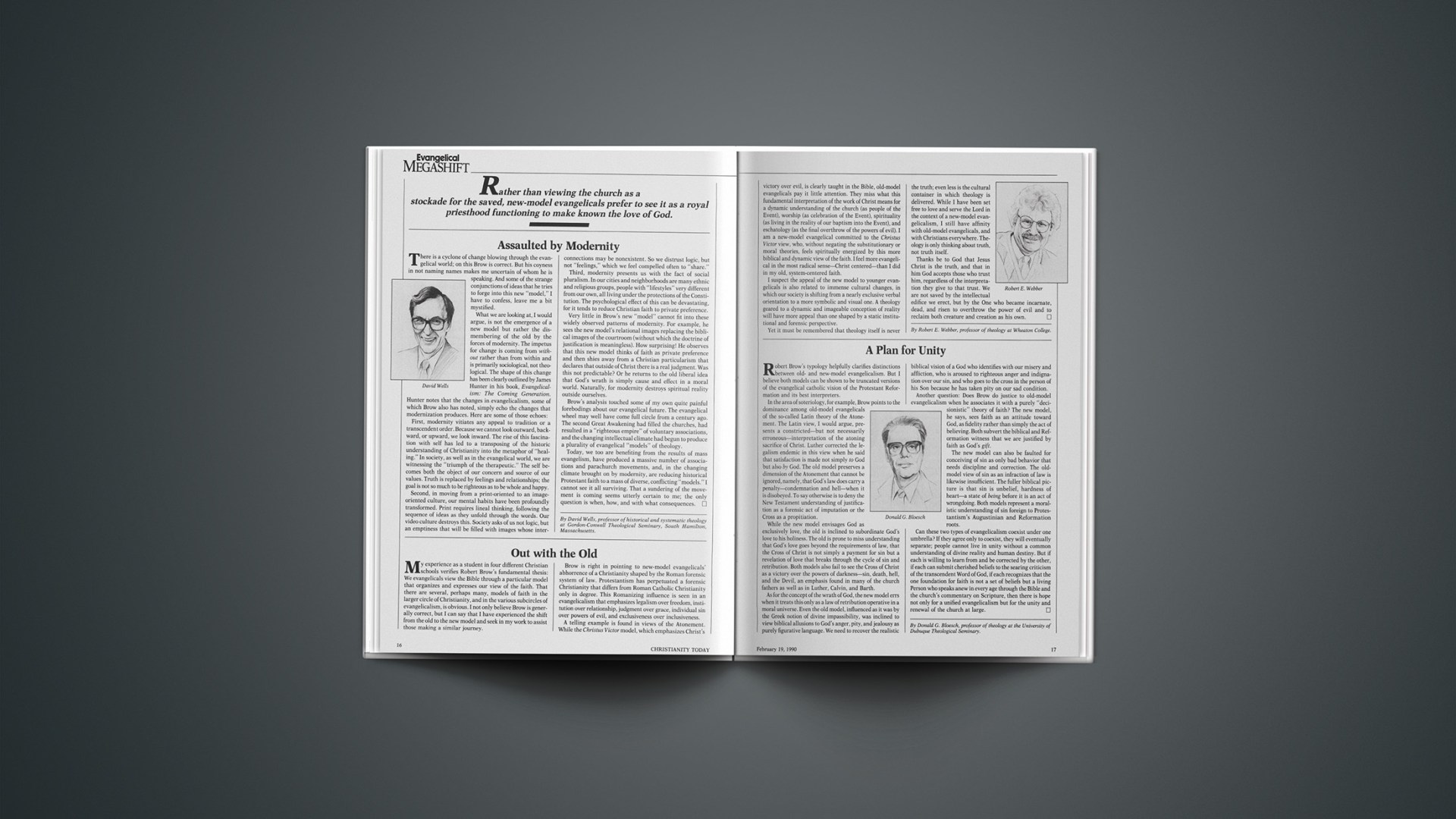Robert Brow’s typology helpfully clarifies distinctions between old- and new-model evangelicalism. But I believe both models can be shown to be truncated versions of the evangelical catholic vision of the Protestant Reformation and its best interpreters.
In the area of soteriology, for example, Brow points to the dominance among old-model evangelicals of the so-called Latin theory of the Atonement. The Latin view, I would argue, presents a constricted—but not necessarily erroneous—interpretation of the atoning sacrifice of Christ. Luther corrected the legalism endemic in this view when he said that satisfaction is made not simply to God but also by God. The old model preserves a dimension of the Atonement that cannot be ignored, namely, that God’s law does carry a penalty—condemnation and hell—when it is disobeyed. To say otherwise is to deny the New Testament understanding of justification as a forensic act of imputation or the Cross as a propitiation.
While the new model envisages God as exclusively love, the old is inclined to subordinate God’s love to his holiness. The old is prone to miss understanding that God’s love goes beyond the requirements of law, that the Cross of Christ is not simply a payment for sin but a revelation of love that breaks through the cycle of sin and retribution. Both models also fail to see the Cross of Christ as a victory over the powers of darkness—sin, death, hell, and the Devil, an emphasis found in many of the church fathers as well as in Luther, Calvin, and Barth.
As for the concept of the wrath of God, the new model errs when it treats this only as a law of retribution operative in a moral universe. Even the old model, influenced as it was by the Greek notion of divine impassibility, was inclined to view biblical allusions to God’s anger, pity, and jealousy as purely figurative language. We need to recover the realistic biblical vision of a God who identifies with our misery and affliction, who is aroused to righteous anger and indignation over our sin, and who goes to the cross in the person of his Son because he has taken pity on our sad condition.
Another question: Does Brow do justice to old-model evangelicalism when he associates it with a purely “decisionistic” theory of faith? The new model, he says, sees faith as an attitude toward God, as fidelity rather than simply the act of believing. Both subvert the biblical and Reformation witness that we are justified by faith as God’s gift.
The new model can also be faulted for conceiving of sin as only bad behavior that needs discipline and correction. The old-model view of sin as an infraction of law is likewise insufficient. The fuller biblical picture is that sin is unbelief, hardness of heart—a state of being before it is an act of wrongdoing. Both models represent a moralistic understanding of sin foreign to Protestantism’s Augustinian and Reformation roots.
Can these two types of evangelicalism coexist under one umbrella? If they agree only to coexist, they will eventually separate; people cannot live in unity without a common understanding of divine reality and human destiny. But if each is willing to learn from and be corrected by the other, if each can submit cherished beliefs to the searing criticism of the transcendent Word of God, if each recognizes that the one foundation for faith is not a set of beliefs but a living Person who speaks anew in every age through the Bible and the church’s commentary on Scripture, then there is hope not only for a unified evangelicalism but for the unity and renewal of the church at large.
By Donald G. Bloesch, professor of theology at the University of Dubuque Theological Seminary.










